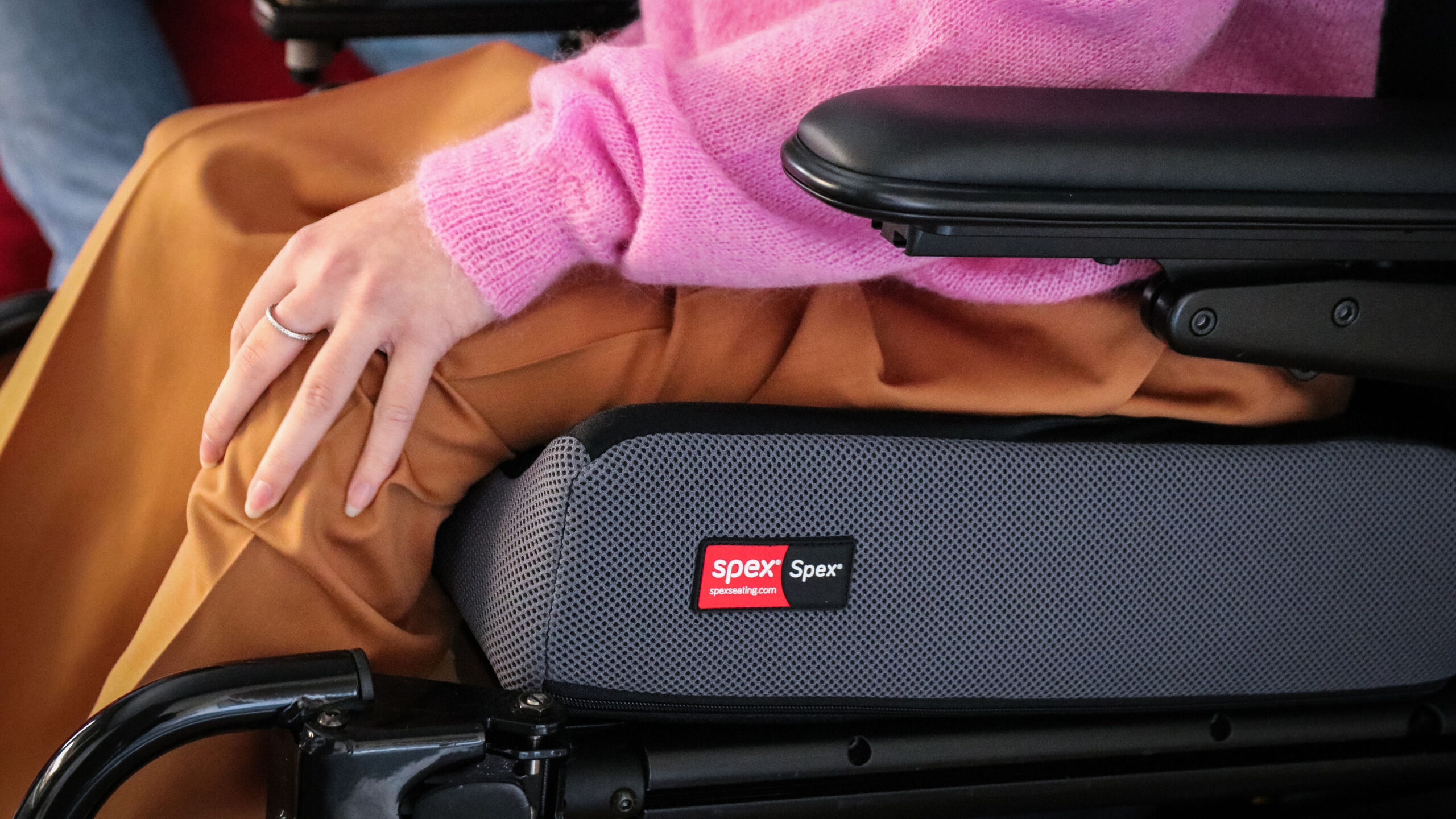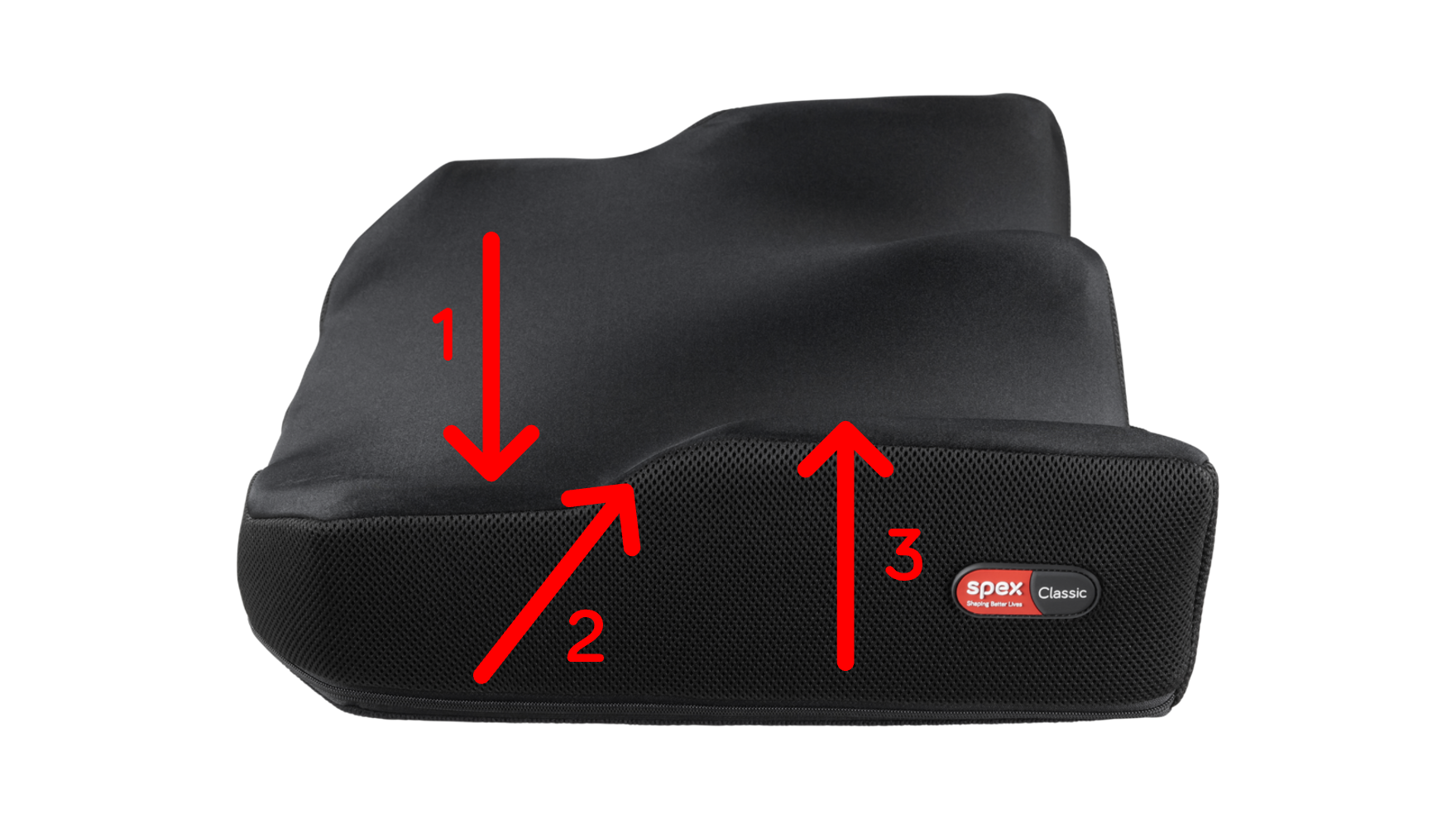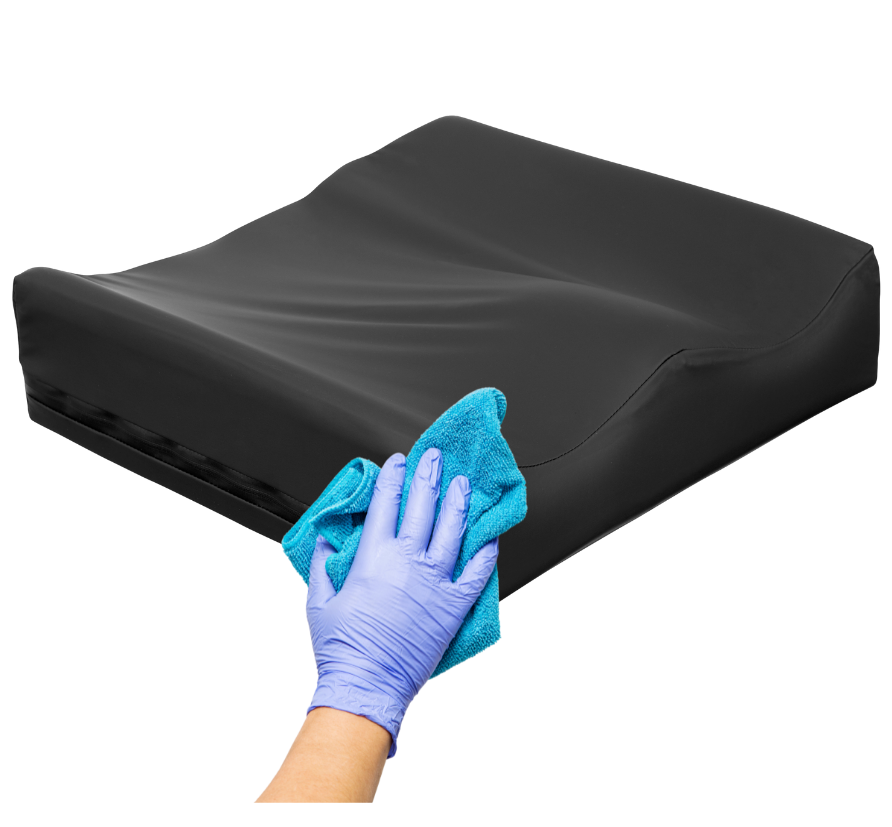The selection, orientation and care of a cushion all play a vital role in maintaining good postural support and skin integrity for the user. Fabric covers can become worn, cushions may not be positioned correctly, and unprotected foam can lose its functional properties needed for positioning and pressure relief management.
These are some examples of how the effectiveness in meeting the wheelchair user’s seating needs can be impacted. This resource provides some guidance on cushion care, maintenance and solutions to common challenges. Further details are available in the Spex cushion manuals.
Cushion is incorrectly positioned on the seat.
Check cushion position and contouring before transferring into the wheelchair.
Check the fabric cover is on correctly.
Check that the cushion is sufficiently stable on the seat pan- velcro or brackets to hold the cushion in position can be used.
The cushion cover is on the wrong way round or incorrect cover is used on the cushion.
Remove and replace the cover so that cover contours correspond to the contours of the cushion.
Tags are at the back and the handle to remove the cushion is at the front.
Only use Spex cushion covers on Spex cushions.
The cushion covers are frayed, worn or torn.
Order a replacement cover as soon as possible.
Wash the fabric cover regularly to remove dust build-up.
Monitor skin for pressure areas in case this increases creases/rucking of fabric where this is frayed or increases friction where skin is in contact.
Protect the cover from open flame or cigarettes, sharp objects and pets.
Make sure the correct cover is being used – use Spex covers with Spex cushions.
Check the foam for any misture – ensure thoroughly dired before use. If mositure is due to bodily fuids, check incontinence cover and replace cushions and covers.
The foam is deformed or has lost its properties.
Order a replacement cushion as soon as you become aware of the damage.
Always ensure that the hygiene/incontinence cover and fabric cover are used to protect the foam.
Monitor skin for pressure areas and monitor levels of discomfort and/or pain if postural stability support has reduced in the cushion.
If due to long-term use then cushion replacement is recommended.
If wheelchair user weight changes occur, a review of cushion may be required to ensure that that cushion still meets their needs.
If due to damage such as water ingress or tearing, remove the cause (check pockets for sharp items, protect from pets, check integrity of the cushion cover).
Spex cushions should not be stored at temperatures below 5°C/41°F and should be kept at room temperature before the person transfers onto the wheelchair.
Check that the correct cover is being used.
The inner foam is wet.
Ensure the cushion foam is thoroughly dried before use.
Check incontinence cover.
In event of foam becoming wet due to incontinence, order a replacement cushion and/or covers to ensure the foam integrity is maintained to meet the wheelchair user’s needs and maintain hygiene and pressure relief. Report this to distributor.
The wheelchair user is experiencing pain or discomfort when using the cushion or back support.
Check seating system and accessories are correctly positioned on the wheelchair.
Request a clinical assessment review.
Consult your authorized Spex seating supplier.
Posture can change and seating needs can change. It is important that for progressive or changing conditions that postural review is scheduled to monitor changes over time so that products can be selected or reconfigured to respond to these changing needs.
Weight fluctuations can also mean that supporting seat surfaces and accessories may need to be adjusted or reconfigured to respond to body shape changes for optimal reinforcing postural support. Be aware of the weight limits for the corresponding cushion widths:
- 10-15″ (25.4-38cm) Cushion maximum user weight: 200lbs. (90kg)
- 16-20″ (41-51cm) Cushion maximum user weight: 350lbs. (160kg)
- Engström, B. (2011). Ergonomic seating: A true challenge : seating and mobility for the physically challenged risks & possibilities when using wheelchairs. Posturalis Books. P.86







 Protect Your Cushion
Protect Your Cushion